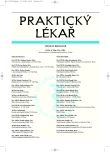A contribution to laboratory methods of destruction of anti-tumour pharmaceuticals
Authors:
J. Barek 1; V. Bencko 2; J. Novotný 3; J. Zima 1
Authors‘ workplace:
Přírodovědecká fakulta UK, Praha
katedra analytické chemie, UNESCO, laboratoř elektrochemie životního prostředí
Vedoucí katedry: prof. RNDr. Jiří Barek, CSc.
1; Univerzita Karlova v Praze, 1. LF a VFN, Ústav hygieny a epidemiologie
Přednosta: prof. MUDr. Vladimír Bencko, DrSc.
2; Onkologická klinika 1. LF UK a VFN, Praha
Přednosta: doc. MUDr. Luboš Petruželka, CSc.
3
Published in:
Prakt. Lék. 2008; 88(5): 255-258
Category:
Reviews
Overview
Methods suitable for the decontamination and destruction of selected anti-cancer drugs with possible genotoxic effects on hospital staff coming into contact with those drugs during their preparation, application or during contact with contaminated hospital wastes have been reviewed. These methods, developed in co-operation with our laboratories and verified by International Agency for Research on Cancer, are applicable to the following anti-cancer drugs: amsacrine, azathioprine, carmustine, chlorozotocine, cis-platin, cyclofosfamide, daunorubicin, dichlormethotrexat, doxorubicin, ifosfamid, lomustine, melphalan, 6-merkaptopurine, methotrexat, semustine, streptozotocine, 6-thioguanine, thiotepa, vincristine, and vinblastine. For their application on structurally similar anti-cancer drugs, it is necessary to first verify their chemical and biological effectiveness.
Key words:
Anti-tumour drugs, destruction, decontamination.
Sources
1. Barek, J. Laboratorní metody destrukce chemických karcinogenů. Chemické Listy, 1986, 80, s. 904-917.
2. Barek, J., Cvačka, J., Zima, J. et al. Chemical degradation of wastes of antineoplastic agents Amsacrine, Azathioprine, Asparaginase and Thiotepa. Ann. Occup. Hyg. 1986, 42, p. 259-266.
3. Barek, J., Mejstřík, V., Zima, J. Dekontaminace laboratoří pracujících s chemickými karcinogeny a analytické monitorování účinnosti destrukce těchto látek. Chemické Listy 1993, 87, s. 322-331.
4. Bencko, V., Kapek, J. Vinš, O. Hospital waste treatment and disposal in the General University Hospital – current situation and future challenges. Indoor Built Environ 2003, 12, p. 99-104.
5. Castegnaro, M., Adams J., Armour , M.A., Barek, J. et al. Laboratory decontamination and destruction of chemical carcinogens in laboratory wastes: some antineoplastic agents. IARC Scientific Publication No. 73. Lyon: IARC, 1985.
6. Jemelková, Z. Sledování účinnosti fotochemické destrukce Doxorubicinu. Bakalářská práce, Přírodovědecká fakulta Univerzity Karlovy v Praze. Praha: 2002.
7. Lanová, D. Spektrofotometrické sledování destrukce protinádorových léčiv Azathioprinu a Amsacrinu. Bakalářská práce. Přírodovědecká fakulta Univerzity Karlovy v Praze. Praha: 1997.
8. Montesano, R. Handling of chemical carcinogens in the laboratory-problems of safety. IARC Scientific Publication No. 33. Lyon: IARC, 1979.
Labels
General practitioner for children and adolescents General practitioner for adultsArticle was published in
General Practitioner

2008 Issue 5
- Metamizole vs. Tramadol in Postoperative Analgesia
- Memantine in Dementia Therapy – Current Findings and Possible Future Applications
- Metamizole at a Glance and in Practice – Effective Non-Opioid Analgesic for All Ages
- What Effect Can Be Expected from Limosilactobacillus reuteri in Mucositis and Peri-Implantitis?
- Hope Awakens with Early Diagnosis of Parkinson's Disease Based on Skin Odor
Most read in this issue
- The late effects of xenobiotics. 1. effect mechanisms and their occurrence in the environment
- History, present problems and challenges in prevention of nosocomial infections
- Violence as a disquieting phenomenon in contemporary health services
- Treatment of tobacco dependence: prevention, diagnosis and treatment in General Practice
